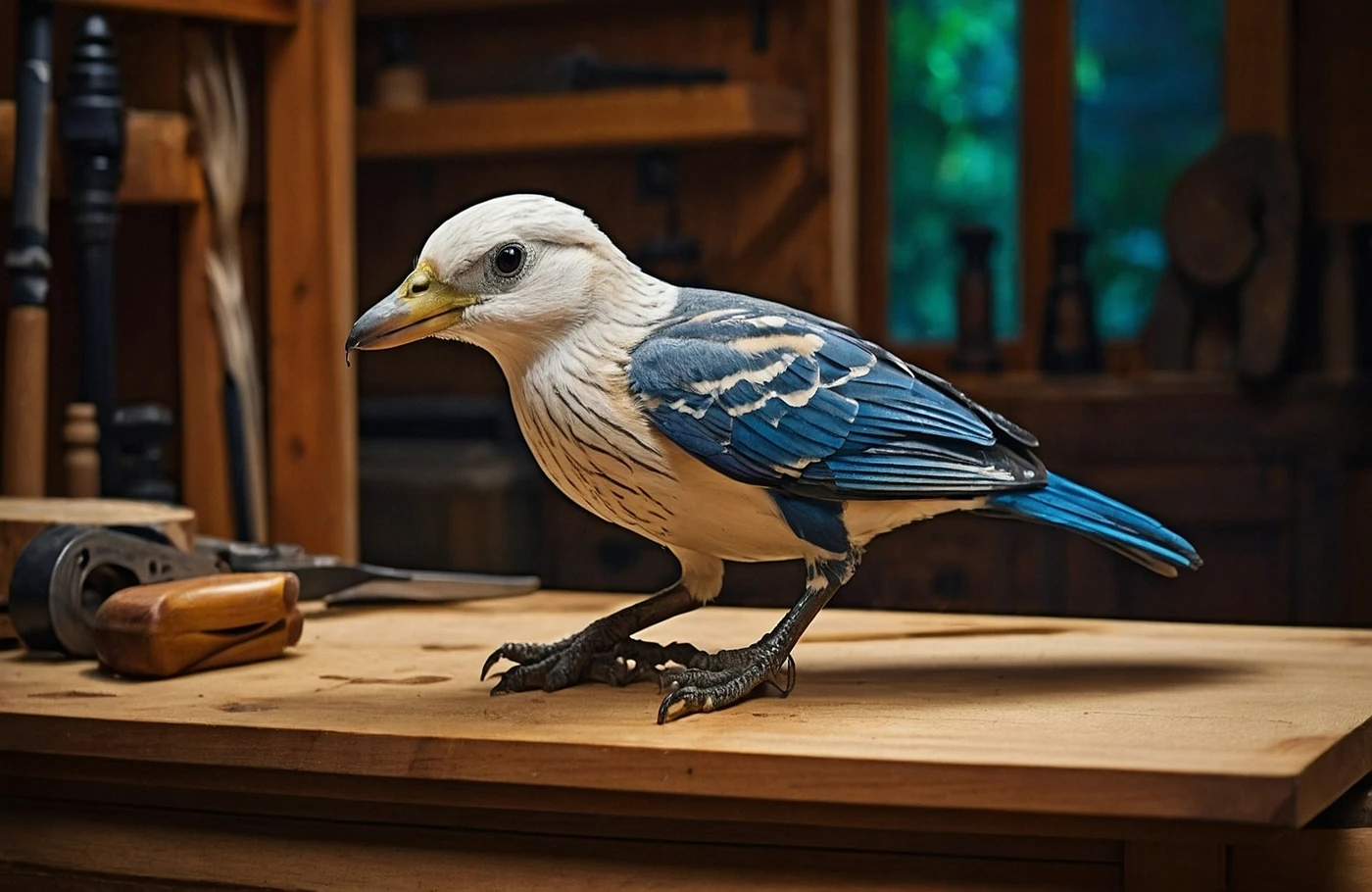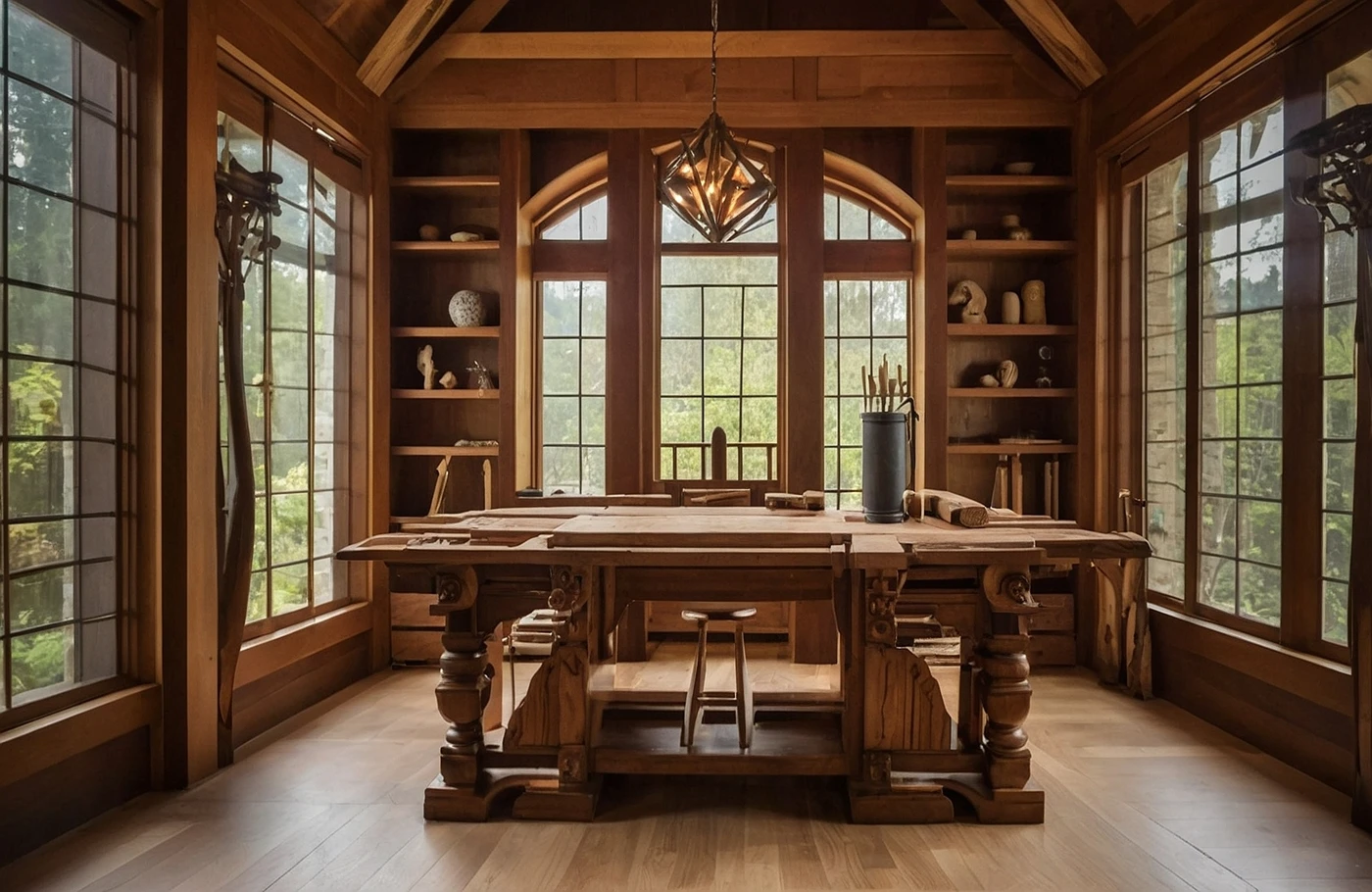How To Clean Mold Wood Furniture

Effectively Cleaning Mold-Infested Wood Furniture
Restoring Mold-Ravaged Wood Furniture
Dealing with mold on wood furniture can be a daunting task, but with the right approach, you can effectively clean and restore your cherished pieces. Mold not only compromises the aesthetic appeal of your furniture but can also pose health risks if left unchecked. In this comprehensive guide, we'll explore the steps to safely and effectively clean mold-infested wood furniture, helping you bring your treasured items back to their former glory.
Understanding the Risks of Mold on Wood Furniture
Mold growth on wood furniture can be a significant concern, as it can release spores into the air and potentially cause respiratory issues, allergic reactions, and other health problems. It's important to approach the cleaning process with caution, wearing protective gear such as gloves and a mask to minimize your exposure to the harmful spores.
Preparing the Work Area
Before you begin the cleaning process, it's crucial to prepare your work area. Ensure the room is well-ventilated and close off any vents or doors to prevent the spread of mold spores. Cover the surrounding surfaces with plastic sheeting or drop cloths to contain any debris or cleaning solutions that may drip or splash during the process.
Identifying the Type of Mold
The first step in effectively cleaning mold-infested wood furniture is to identify the type of mold present. Different types of mold may require specialized cleaning methods, so it's essential to determine the specific mold growth before proceeding. If the mold appears to be extensive or you're unsure of the type, it's advisable to consult a professional for guidance.
Removing Surface Mold
Begin the cleaning process by addressing the visible mold growth on the surface of the wood furniture. Use a stiff-bristled brush or a clean, dry cloth to gently scrub the affected areas, taking care not to spread the mold. Dispose of any contaminated materials properly to prevent further spread.
Disinfecting the Wood
After removing the surface mold, it's time to disinfect the wood to kill any remaining spores. Mix a solution of one part bleach to three parts water in a well-ventilated area. Apply the solution to the affected areas using a clean cloth or sponge, taking care to avoid saturating the wood. Allow the solution to sit for several minutes before wiping it away with a damp cloth.
Drying the Furniture
Once the disinfection process is complete, it's essential to thoroughly dry the wood furniture. Use clean, dry towels or a fan to facilitate the drying process, ensuring that all the surfaces are completely dry. Proper drying is crucial to prevent the regrowth of mold.
Sanding and Refinishing
If the mold has caused significant damage to the wood's surface, you may need to sand the affected areas to remove any remaining stains or imperfections. Be gentle and cautious during the sanding process to avoid further damaging the wood. After sanding, apply a fresh coat of wood finish or sealant to protect the furniture from future mold growth.
Maintaining a Mold-Free Environment
To prevent the recurrence of mold on your wood furniture, it's important to maintain a healthy indoor environment. Ensure adequate ventilation, control humidity levels, and promptly address any moisture issues in your home. Regular cleaning and inspection of your furniture can also help identify and address mold problems before they become more extensive.
By following these steps, you can effectively clean and restore your mold-infested wood furniture, safeguarding your treasured pieces and creating a healthier living environment.
Preventing Future Mold Growth on Wood Furnishings
Here is a 599-word article on "Preventing Future Mold Growth on Wood Furnishings":
Safeguarding Your Wood Furniture: Effective Strategies to Prevent Mold
Mold can be a persistent and unwelcome guest in any household, and when it takes hold on wood furniture, the consequences can be devastating. Not only does mold compromise the structural integrity of the furniture, but it can also pose serious health risks. Fortunately, with the right knowledge and preventive measures, you can safeguard your beloved wood furnishings and maintain their beauty and longevity.
Understanding the Causes of Mold Growth on Wood
Mold thrives in damp, humid environments, and wood furniture is particularly susceptible to its growth. When wood is exposed to excessive moisture, whether from spills, leaks, or high humidity levels, it creates the perfect breeding ground for mold. Over time, the mold can penetrate deep into the wood, causing discoloration, warping, and even structural damage.
Implementing Proactive Mold Prevention Strategies
To keep mold at bay and protect your wood furniture, it's essential to adopt a proactive approach. Here are some effective strategies to consider:
Maintain Proper Humidity Levels
Controlling the humidity levels in your home is a critical step in preventing mold growth. Aim to keep the relative humidity below 50% by using a dehumidifier or ensuring adequate ventilation in moisture-prone areas. Regularly monitor the humidity levels and make adjustments as needed.
Promptly Address Spills and Leaks
Spills and leaks can quickly lead to mold if not addressed immediately. When an accident occurs, blot up the excess moisture with a clean, dry cloth and then use a mild soap and water solution to clean the affected area. Be sure to dry the surface thoroughly to prevent any lingering dampness.
Regularly Clean and Condition Wood Furniture
Routine cleaning and conditioning of your wood furniture can help create an environment that is less favorable for mold growth. Use a wood-safe cleaner and a soft cloth to gently wipe down the surfaces, paying close attention to crevices and joints where mold may accumulate. Follow up with a wood conditioner to nourish and protect the material.
Ensure Proper Air Circulation
Good air circulation can help prevent mold by reducing moisture buildup. Avoid placing furniture in dark, damp corners or areas with poor airflow. Rearrange your room layout to promote better air movement, and consider using fans or opening windows (when weather permits) to enhance ventilation.
Monitor for Early Signs of Mold
Regularly inspect your wood furniture for any signs of mold growth. Look for discoloration, fuzzy or slimy patches, or a musty odor. Catching mold in its early stages makes it much easier to address before it spreads and causes extensive damage.
Addressing Existing Mold Growth
If you do discover mold on your wood furniture, it's crucial to act quickly to contain the problem. Depending on the extent of the mold, you may be able to clean it yourself using a mixture of water and white vinegar or a commercial mold-removal product. However, for larger or more persistent mold infestations, it's best to consult a professional mold remediation specialist to ensure the mold is properly and safely removed.
Protecting Your Investment
Your wood furniture represents a significant investment, both financially and emotionally. By implementing proactive mold prevention strategies and addressing any mold issues promptly, you can safeguard your furnishings and ensure they continue to enhance the beauty and comfort of your living spaces for years to come.
Identifying and Addressing Root Causes of Mold Problems
Identifying and Addressing the Root Causes of Mold Problems
Mold growth can be a persistent and frustrating issue, especially when it comes to wooden furniture. To effectively address mold problems, it's crucial to identify and address the root causes. In this article, we'll explore the steps you can take to identify the underlying issues and effectively eliminate mold from your wooden furniture.
Understanding Mold Growth
Mold thrives in damp, humid environments where it can find a suitable food source, such as wood, paper, or organic materials. Mold spores are constantly present in the air, and they can quickly take hold and multiply when the right conditions are present. Identifying the root causes of mold growth is the key to preventing and eliminating this problem.
Identifying the Source of Moisture
The first step in addressing mold on wooden furniture is to identify the source of moisture. Mold cannot grow without the presence of water or excessive humidity. Common sources of moisture include leaks, condensation, poor ventilation, and high humidity levels. Carefully inspect the area around the affected furniture to pinpoint the source of the moisture.
Addressing Structural Issues
Once you've identified the source of moisture, it's important to address any underlying structural issues that may be contributing to the problem. This could include repairing leaks, improving ventilation, or addressing any other factors that are allowing moisture to accumulate. Addressing these root causes is crucial to preventing the recurrence of mold growth.
Cleaning and Treating Mold-Affected Furniture
After addressing the moisture source and structural issues, it's time to clean and treat the affected wooden furniture. Begin by removing any loose or visible mold using a stiff brush or cloth. Be sure to wear protective gear, such as gloves and a mask, to avoid inhaling mold spores. Once the visible mold is removed, use a mold-killing solution to treat the affected area. There are a variety of commercial mold-killing products available, or you can create your own solution using a mixture of water and bleach or vinegar.
Preventing Future Mold Growth
To prevent future mold growth, it's important to maintain a dry, well-ventilated environment. This may involve the use of dehumidifiers, fans, or other measures to control humidity levels. Additionally, regularly inspect your wooden furniture for signs of moisture or mold and address any issues promptly.
Safely Disposing of Mold-Affected Materials
In some cases, the mold problem may be too severe to effectively clean and treat the furniture. In these situations, it's important to safely dispose of the affected materials to prevent the spread of mold spores. Wrap the furniture in plastic and seal it before disposing of it in accordance with local regulations.
Seek Professional Assistance if Needed
If the mold problem is extensive or you're unsure of how to effectively address it, it's always best to seek the assistance of a professional mold remediation service. They have the expertise and equipment to safely and effectively address the issue, ensuring that the mold is eliminated and the risk of future growth is minimized.
By following these steps and addressing the root causes of mold growth, you can effectively eliminate mold from your wooden furniture and prevent it from returning. Remember, taking prompt action and maintaining a dry, well-ventilated environment are key to keeping your wooden furniture mold-free.
Natural and Chemical-Free Mold Removal Techniques
Reviving Your Furniture: Effective Mold Removal Techniques
Mold can be a frustrating and challenging issue for any furniture owner, but there are effective ways to address it without relying on harsh chemicals. In this article, we'll explore natural and chemical-free mold removal techniques that can help you restore your cherished wood furniture to its former glory.
Understanding Mold and Its Impact on Wood Furniture
Mold is a type of fungus that thrives in damp, humid environments. When it takes hold on wood furniture, it can cause discoloration, structural damage, and even health concerns. Addressing mold promptly is crucial to prevent it from spreading and causing further harm.
Natural Mold Removal Techniques
-
Vinegar and Baking Soda: A simple and effective solution for mold removal is a mixture of white vinegar and baking soda. Start by wiping the affected area with undiluted white vinegar, which can help kill the mold. Then, make a paste with baking soda and water, and gently scrub the area to remove any remaining mold. This natural combination is a powerful and eco-friendly way to clean your furniture.
-
Hydrogen Peroxide: Another natural option is to use hydrogen peroxide, which has natural antimicrobial properties. Dilute the hydrogen peroxide with water (a ratio of 1:1) and apply the solution to the affected area. Let it sit for a few minutes before wiping it clean with a damp cloth.
-
Tea Tree Oil: Tea tree oil is a natural essential oil with antifungal and antibacterial properties. Mix a few drops of tea tree oil with a carrier oil, such as coconut or olive oil, and gently rub it into the affected areas. The tea tree oil can help kill the mold and prevent its return.
-
Lemon Juice and Salt: The acidity in lemon juice, combined with the abrasive properties of salt, can be an effective mold removal solution. Make a paste with lemon juice and salt, and gently scrub the affected area. Rinse the furniture with a damp cloth afterward.
Chemical-Free Mold Prevention Strategies
In addition to the natural mold removal techniques, it's essential to address the underlying causes of mold growth to prevent it from returning. Here are some chemical-free strategies to help keep your wood furniture mold-free:
-
Maintain Proper Humidity Levels: Mold thrives in damp environments, so keeping the humidity in your home at an optimal level (between 30-50%) can help discourage mold growth.
-
Improve Air Circulation: Ensure adequate air circulation around your wood furniture by placing it in well-ventilated areas and using fans or dehumidifiers if necessary.
-
Regular Cleaning and Maintenance: Regularly cleaning and maintaining your wood furniture can help prevent mold. Wipe down surfaces with a clean, dry cloth and address any spills or moisture issues promptly.
-
Consider Natural Sealants: Applying a natural sealant, such as beeswax or tung oil, can create a barrier that helps protect the wood from moisture and mold.
By implementing these natural and chemical-free mold removal techniques and prevention strategies, you can effectively address mold on your wood furniture and maintain a healthy, beautiful home environment.
Restoring the Beauty of Mold-Damaged Wood Furniture
Identifying and Tackling Mold on Wood Furniture
Mold can be a frustrating and unsightly problem for owners of antique or cherished wood furniture. Not only does it compromise the integrity of the wood, but it can also pose health risks if left untreated. However, with the right techniques and a little elbow grease, it is possible to restore the beauty and functionality of mold-damaged wood furniture.
Assessing the Damage
The first step in addressing mold on wood furniture is to assess the extent of the damage. Carefully inspect the affected areas, looking for signs of discoloration, crumbling, or brittleness in the wood. Determine whether the mold has penetrated deeply into the wood or if it is primarily on the surface. This information will guide your cleaning and restoration approach.
Safely Removing Mold
Once you have a clear understanding of the mold situation, it's time to tackle the cleaning process. Safety should be the top priority when dealing with mold. Wear protective gear, such as a mask, gloves, and goggles, to avoid inhaling or coming into direct contact with the mold spores.
Begin by gently brushing away any loose mold or debris with a soft-bristle brush. Avoid sanding or scrubbing, as this can spread the mold and exacerbate the problem. Instead, use a damp cloth to wipe down the affected areas, being careful not to let excess moisture soak into the wood.
For deeper or more stubborn mold growth, consider using a mild, mold-killing solution. Dilute household bleach with water in a ratio of 1:10 or use a commercial mold remover specifically designed for wood surfaces. Apply the solution to the affected areas and let it sit for a few minutes before wiping it away. Be sure to thoroughly rinse the area and allow it to dry completely.
Restoring the Wood
After removing the mold, it's time to focus on restoring the wood's appearance and structural integrity. If the mold has caused significant damage, you may need to sand the affected areas to remove any remaining discoloration or pitting. Use fine-grit sandpaper and work in the direction of the wood grain to achieve a smooth, even surface.
Once the sanding is complete, apply a wood preservative or treatment to help protect the furniture from future mold growth. Look for products that contain fungicides or antimicrobial agents to inhibit mold formation. Follow the manufacturer's instructions carefully for best results.
If the mold has compromised the wood's structural stability, you may need to consider more extensive repairs, such as replacing damaged components or seeking the help of a professional furniture restoration expert.
Maintaining Mold-Free Furniture
To prevent mold from recurring, it's essential to address the underlying moisture issues that contributed to the problem in the first place. Ensure that the furniture is kept in a well-ventilated, low-humidity environment, and avoid exposing it to excessive moisture or condensation.
Regularly inspect the furniture for any signs of mold or mildew, and act quickly to address any emerging issues. Additionally, consider applying a protective sealant or wood oil to help create a barrier against moisture penetration.
By following these steps, you can successfully restore the beauty and longevity of your mold-damaged wood furniture, preserving its value and sentimental significance for years to come.
Conclusion
Restoring the beauty and function of mold-infested wood furniture requires a multi-pronged approach. First and foremost, effectively cleaning the mold is crucial to halt its spread and prevent further damage. Using natural, chemical-free methods like white vinegar, baking soda, or hydrogen peroxide can efficiently eliminate mold without introducing harsh toxins.
Once the immediate mold issue has been addressed, it's important to identify and address the root causes that allowed the mold to take hold in the first place. Excess moisture, poor ventilation, and high humidity levels are common culprits, and resolving these underlying problems is key to preventing future mold growth. Simple steps like improving airflow, using dehumidifiers, and addressing any water leaks can go a long way in creating an environment inhospitable to mold.
With the mold removed and the conditions remedied, the final step is to restore the beauty and luster of the wood furniture. Gentle sanding, wood conditioning treatments, and polishing can help revive the natural grain and shine, bringing the piece back to its former glory. For more severely damaged areas, strategic refinishing or even replacement of individual components may be necessary.
By taking a comprehensive approach that combines effective mold removal, root cause analysis, and restorative techniques, it's possible to breathe new life into mold-damaged wood furnishings. Not only does this preserve the investment and sentimental value of the pieces, but it also creates a healthier, more aesthetically pleasing living or working environment.
The key is to act quickly and decisively when mold is discovered, as allowing the problem to fester can lead to increasingly extensive and challenging repairs. With the right knowledge and tools, however, even heavily mold-infested wood furniture can be salvaged and restored to its former glory. By following the steps outlined in this guide, homeowners and furniture owners can reclaim their prized possessions and enjoy them for years to come.



